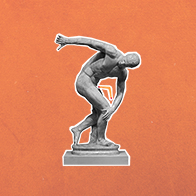Get to Know Peyronie's Disease

Human anatomy comes in a delightful variety of shapes and sizes, and the diversity doesn't end with the parts you can see outside the clothing. Penises, too, come in a wild array of configurations.
However, once you're accustomed to what yours looks like, dramatic alterations in its shape can be distressing. In some cases, you may end up asking, "Why does my penis curve?"
Well, 10 percent of men—and by some estimates, even more—may be asking that same question.
The answer is Peyronie's disease.
What is Peyronie's disease?
Peyronie's disease involves a buildup of scar tissue or plaque inside the penis that changes its shape when erect. In certain situations, the plaque can result in a bent penis that angles as much as 90 degrees. In other cases, it may encircle the penis completely and result in an hourglass shape.
To be clear, many guys have penises that curve naturally from birth: congenital penile curvature. This isn't the same as Peyronie's disease.
"I think it's important to differentiate between Peyronie's disease and congenital curvature of the penis," said Neel Parekh, M.D., a male fertility specialist with Cleveland Clinic. "A lot of guys are just born with a natural curve to the penis, and obviously, that's not Peyronie's disease. Peyronie's disease is something they've acquired. It's a new-onset curvature."
Penile curvature may develop, in part, due to genetic tendencies or autoimmune diseases. As men age, curvature becomes increasingly common due to damage to the internal structures of the penis. The primary structure is the tough membrane called the tunica albuginea, which acts as a sheath to help keep the penis erect during sexual stimulation. But if the membrane gets damaged—say, during overenthusiastic sexual intercourse that goes awry—it can develop scar tissue that causes it to bend.
"I like to think of it as if you're going to blow up one of those balloons that clowns will fold up into a poodle," said Amy Pearlman, M.D., the director of men's health at the Carver College of Medicine at University of Iowa Health Care. "If you put tape on one side, it's going to curve. Scar tissue doesn't stretch like healthy tissue."
How does Peyronie's disease develop?
Peyronie's usually follows a specific path. During its acute phase—the first 12 to 18 months—the penis curvature changes and the patient may feel pain with erections. When the pain subsides and the curvature stabilizes, that's called the chronic phase.
Peyronie's is sometimes precipitated by a single traumatic injury to the penis, perhaps even a penile fracture. Today, the urological community says it may just as often result from microtraumas absorbed over time.
"A lot of guys who come in may not remember a specific event," Pearlman said. "Think about what the penis has been through in its lifetime. It's been through a lot for a lot of men. Especially if guys are trying to penetrate and finish the job and they're losing their erection."
The link between Peyronie's and ED
Pearlman alluded to an important piece of the Peyronie's puzzle: It often presents along with erectile dysfunction (ED). Not only are both conditions more common in older men, but they also may contribute to each other, even if the direction of the causal link isn't clear.
"That's another point of contention: Which came first? Was it Peyronie's disease that led to erectile dysfunction? Or was it ED that led to Peyronie's disease?" Parekh said. "There's no great consensus. As patients age, obviously, their erections aren't as firm or as rigid, so that allows for more bend in the penis during sexual activity. And that repetitive bending leads to scar tissue forming. But it's not definitive."
In addition to less-than-ideal erections being prone to bending during sex, another link between Peyronie's and ED is that the scar tissue itself can directly impede the ability of the veins in the penis to trap the blood needed to maintain an erection.
"Peyronie's and ED really go hand in hand," Pearlman said. "A lot of times, we'll see ED starting first and they might present with Peyronie's. But oftentimes, Peyronie's itself can cause ED because that scar tissue can prevent the veins from closing off completely."
Another consideration in terms of ED is the psychological effect of your penis changing appearance in ways you might not like.
"We think about body image a lot with women, but men have the same body image issues," Pearlman said. "There's so much that goes into performance that…there [may be] concerns about how their penis looks with a different shape or hourglass, especially if it's causing anxiety where someone looks down and they're not comfortable with how it looks."
Is Peyronie's disease curable?
The good news is a variety of Peyronie's treatments are available. The choice depends on the severity of the curvature and whether erectile dysfunction is present. Keep in mind that the acute phase—as the curvature develops—is not the time for treatment. You probably want to wait on any drastic interventions until the curvature stabilizes.
"About a third of patients will get worse, a third will get better and a third of patients will stay the same," Parekh said. "So we usually don't recommend any invasive treatment during that acute phase because things are still developing. I'll recommend conservative treatment during that acute phase, like a traction device."
It's also important to "exercise" the penis during this phase, even if erections are painful.
Yes, there are Peyronie's disease exercises.
"An important message for guys is it's still important to get erections," Pearlman said. "Even if erections cause pain, they're not damaging their penis by getting erections. In fact, stretching the penis either with traction or Cialis and encouraging daily erections is probably the best thing they can do in that acute phase. Not to say they have to be having sex when they're having pain, but getting that good erection is going to be rehabbing the penis from the inside out."
There are a number of treatment options for men whose penis curvature is more severe than 30 degrees. Traction devices are common. Various surgical procedures can be used. Surgeons can shorten the penis on the side opposite the plaque or make the affected side of the penis longer by cutting the scar tissue and removing some of it.
An injectable drug called Xiaflex helps break up the scar tissue and straighten the penis to some degree.
What's important is to know all your options; one of those is simply living with it, especially if the curve is 30 degrees or less and it's not causing pain or distress.
"The key thing for patients is finding someone who enjoys these kinds of nuanced conversations, because when there are five or 10 different ways of treating it, it requires a long discussion," Pearlman said. "There is no perfect option, so people need to sit down with someone who can offer these kinds of long discussions about all of the options."




















